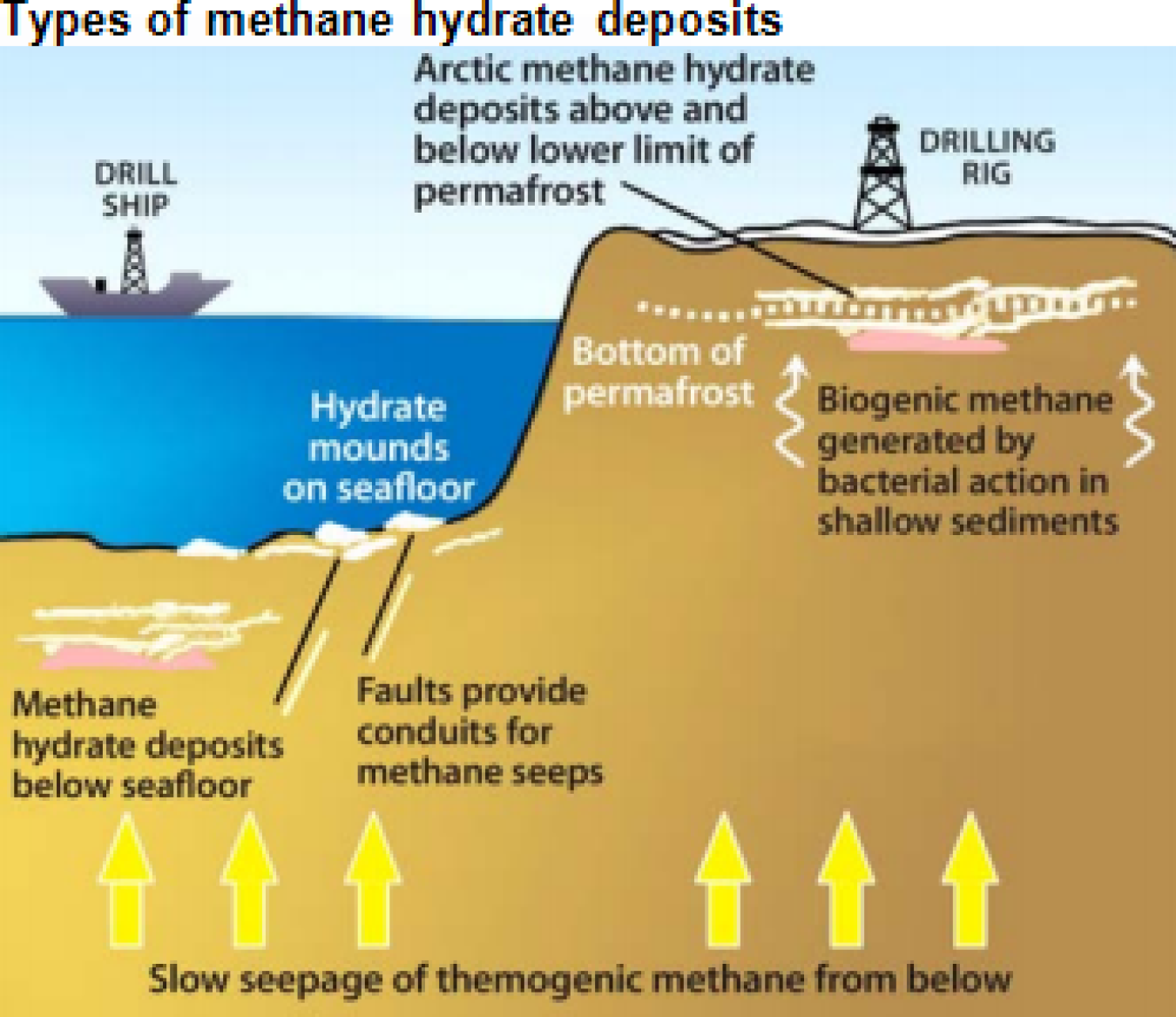
Gas Hydrates R&D Program
The Department of Energy Fossil Energy’s Gas Hydrates R&D Program’s mission is to develop commercially viable technology and methodology for discovering, assessing, and producing gas hydrates, which will lead to advancing the potential for gas hydrates to become a reliable future energy resource through collaboration with industry, academia, international research organizations, and other U.S. government agencies.
Gas hydrates consist of molecules of natural gas (the chief constituent of natural gas; methane) enclosed within a solid lattice of water molecules. When brought to the earth's surface, one cubic meter of gas hydrate releases 164 cubic meters of natural gas. Gas hydrate deposits are found wherever methane occurs in the presence of water under elevated pressures and at relatively low temperatures, such as beneath permafrost or in shallow sediments along deepwater continental margins. Methane that forms hydrate can be both biogenic, created by biological activity in sediments, and thermogenic, created by geological processes deeper within the earth. Once assumed to be rare, gas hydrates are now thought to occur in vast volumes and to include 250,000–700,000 trillion cubic feet of methane and the formation thickness can be several hundred meters thick.
Early challenges associated with evaluating the production of methane from hydrates included confirming the existence and occurrence of quality reservoirs, demonstrating the ability to reliably locate such occurrences, and developing the techniques/technologies required to enable production. These challenges are being addressed through DOE and internationally supported research efforts. Challenges still exist to fully understand the potential for, and implications of, gas production from hydrates.
The goal of the Gas Hydrates R&D Program is to advance scientific understanding of gas hydrates through early-stage research and to evaluate the occurrence, nature, and behavior of the potentially enormous naturally-occurring gas hydrates resource within the U.S. The Program also works to confirm the scale and nature of the potentially recoverable resource through complex drilling and coring programs needs to be carried out. The Program will ultimately develop the technologies needed to safely and efficiently find, characterize, and recover methane from hydrates through field testing, numerical simulation, and laboratory experimentation.
The commercial viability of gas hydrate reservoirs is not yet known, but will depend on economic conditions in the future. The Program’s objective is to encourage the development of technology and methodology to reduce the overall cost of natural gas hydrate development. Limited number of short production tests have been conducted to date. Therefore a series of controlled scientific field experiments, followed by extended duration production tests are needed to quantify the rates and volumes at which methane can be extracted and to assess any potential environmental impacts.
The U.S. Department of Energy methane hydrate program aims to develop the tools and technologies to allow environmentally safe methane production from Arctic and domestic offshore hydrates. The program includes R&D in:
- Production Feasibility: Methane hydrates occur in large quantities beneath the permafrost and offshore. DOE R&D is focused on determining the potential and environmental implications of production of natural gas from hydrates.
- Research and Modeling: DOE is studying innovative ways to predict the location and concentration of subsurface methane hydrate before drilling. DOE is also conducting studies to understand the physical properties of gas hydrate-bearing strata and to model this understanding at reservoir scale to predict future behavior and production.
- International Collaboration: International collaboration continues to be a vital part of the program since gas hydrates represent research challenges and resource potential that are important on a global scale.
Quick Links
- Gas Hydrates Factsheet
- Methane Hydrate Annual Reports to Congress
- 2018 Alaska North Slope Assessing Gas Hydrate Resource Potential
- 2017 Gulf of Mexico Drilling and Coring Expedition
- WATCH: Fueling the Future: The Search for Methane Hydrate
- Quadrennial Technology Review 2015: Gas Hydrates Research & Development
- The 2012 Ignik Sikumi Gas Hydrate Field Trial
- WATCH: The Ignik Sikumi, Fire in the Ice, Methane Hydrates Research Field Trial Video
- 2011/2012 Ignik Sikumi Dataset
- FE/NETL Methane Hydrate Reference Shelf
- Methane Hydrate Advisory Committee

